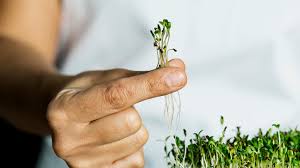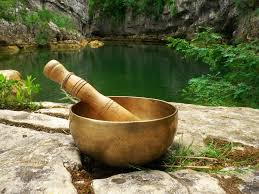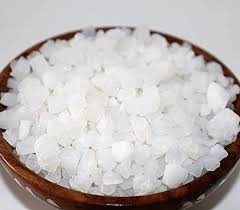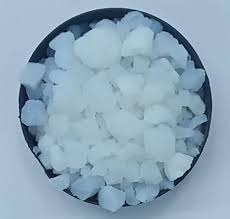
Is Banslochan Mentioned in the Charaka Samhita?
Banslochan, also known as bamboo silica or “Tabasheer,” has been a staple in traditional Ayurvedic and Unani medicine for centuries. Derived from the inner nodes of the bamboo plant, it is revered for its cooling, strengthening, and rejuvenating properties. While many herbs and minerals have their roots in classical Ayurvedic scriptures, an essential question arises for enthusiasts and researchers alike: Is Banslochan mentioned in the ancient Ayurvedic text, Charaka Samhita? In this detailed exploration, we dive into the historical and contextual evidence related to Banslochan and its potential references in this foundational Ayurvedic manuscript.
Long Description
- Understanding Banslochan: A Brief Overview
Banslochan (Bamboo Silica) is a siliceous material collected from the joints of bamboo stems, especially from species like Bambusa arundinacea. It appears as a white, translucent, crystalline substance and has been extensively used in traditional Indian, Persian, and Chinese medicine for its varied health benefits.
In Ayurveda, Banslochan is typically associated with:
Strengthening bones and joints
Enhancing reproductive health
Improving respiratory function
Cooling the body system
Acting as a nervine tonic
Despite its widespread traditional use, the question of its mention in canonical Ayurvedic texts like the Charaka Samhita requires careful literary analysis and interpretation.
- What is Charaka Samhita?
Charaka Samhita is one of the oldest and most authoritative texts in Ayurveda, composed between 1000 BCE and 200 CE. Attributed to the sage Charaka, this text is primarily concerned with internal medicine (Kayachikitsa) and includes discussions on pathology, diagnosis, treatment, and herbal pharmacology.
The text is divided into eight sections (Sthanas), including:
Sutra Sthana (general principles)
Nidana Sthana (diagnostics)
Vimana Sthana (special features)
Sharira Sthana (anatomy and embryology)
Indriya Sthana (sensory organs)
Chikitsa Sthana (therapeutics)
Kalpa Sthana (pharmaceutical preparations)
Siddhi Sthana (success of therapies)
- Direct vs. Indirect References in Ancient Texts
One of the biggest challenges when searching for substances like Banslochan in the Charaka Samhita is that ancient texts often use regional, Sanskritized, or symbolic names that are not directly recognizable to the modern reader. Moreover, not every herb or mineral used traditionally in Ayurveda is explicitly listed in every classical text.
When exploring Banslochan’s presence, researchers often look for:
Sanskrit synonyms such as Tvaksheera, Vanshalochana, or Tabasheer
Descriptions of properties matching those of bamboo silica
Mentions in associated texts like Sushruta Samhita or Bhavaprakasha
- Ayurvedic Properties of Banslochan
Banslochan is generally characterized by the following Ayurvedic properties:
Rasa (Taste): Madhura (Sweet)
Guna (Qualities): Laghu (Light), Snigdha (Unctuous)
Virya (Potency): Sheeta (Cooling)
Vipaka (Post-digestive effect): Madhura
Its action is largely Pitta-pacifying and Kapha-nourishing, which aligns with the descriptions of certain unnamed cooling, siliceous, and mucilaginous substances mentioned in ancient Ayurvedic formulations.
- Is Banslochan Mentioned in the Charaka Samhita?
A direct mention of Banslochan or Vanshalochan by that exact name is not commonly found in the extant versions of the Charaka Samhita. However, certain indirect references, commentaries, and derivatives suggest that substances similar in nature and effect to Banslochan were known to ancient Ayurvedic practitioners.
Some possible indications include:
Descriptions of ‘tvaksheera’ in herb lists used for cooling and pitta-balancing formulations.
Nervine tonics and rejuvenators mentioned for use in mental disorders and respiratory issues that closely match the action of Banslochan.
Later commentaries (Tika) on Charaka Samhita, like those by Chakrapani Datta, provide clarification on substances used during the period which may include Banslochan by other names.
- Recognition in Later Texts and Formulations
Even if not explicitly named in the Charaka Samhita, Banslochan finds solid mention in other authoritative texts:
Bhavaprakasha Nighantu – Provides a detailed description of Vanshalochan, its appearance, sourcing, and medicinal use.
Raja Nighantu – Mentions bamboo-related materials and their benefits.
Siddha and Unani Systems – Widely include Tabasheer in cooling and nervine formulations.
This cross-textual presence suggests that the knowledge and use of Banslochan were prevalent and accepted across schools of traditional medicine.
- Modern Interpretation of Classical Descriptions
Today, Ayurvedic scholars and researchers attempt to correlate modern herbs and minerals with classical descriptions through the following:
Pharmacognostic analysis
Therapeutic property matching
Linguistic studies of Sanskrit synonyms
Regional and folk naming traditions
Based on this, many experts accept that Banslochan may not be directly mentioned by name in the Charaka Samhita, but its equivalents are likely referenced under different nomenclature or descriptions.
- Importance of Banslochan in Contemporary Ayurveda
Despite the textual ambiguity in Charaka Samhita, Banslochan is now an established Ayurvedic ingredient used in:
Chyawanprash and other Rasayana formulas
Herbal tablets and churnas for cooling and rejuvenation
Infant and postpartum tonics
Joint care and respiratory health formulations
Its continued use underlines its acceptance in traditional and modern Ayurvedic practice.
- Conclusion: What Does This Mean for the Ayurvedic Enthusiast?
For researchers and readers of Ayurveda, it is crucial to understand that absence of direct mention does not imply absence of knowledge or use. The complexity and richness of Ayurvedic literature often demand cross-referencing and contextual reading.
While Banslochan may not appear under its modern or regional names in the Charaka Samhita, the herb’s properties, therapeutic roles, and related descriptions can still be found throughout classical texts when studied holistically. This reinforces the depth and breadth of Ayurveda and the evolving understanding of ancient knowledge through the lens of modern interpretation.










